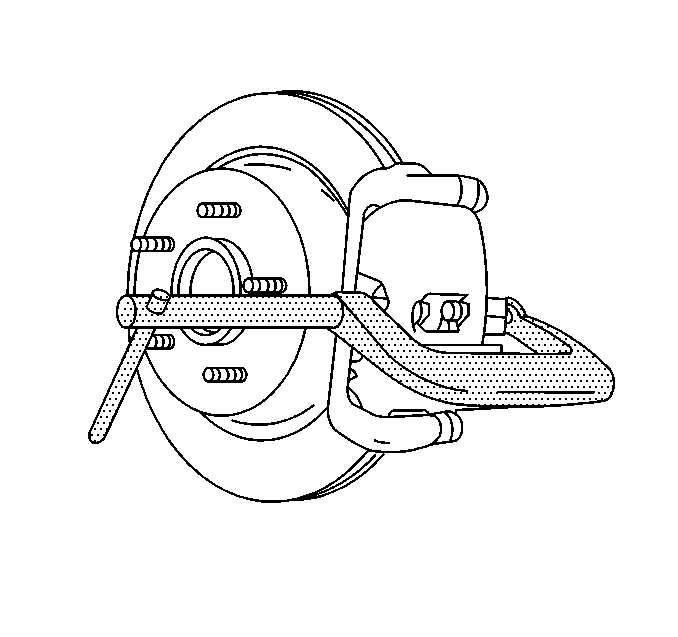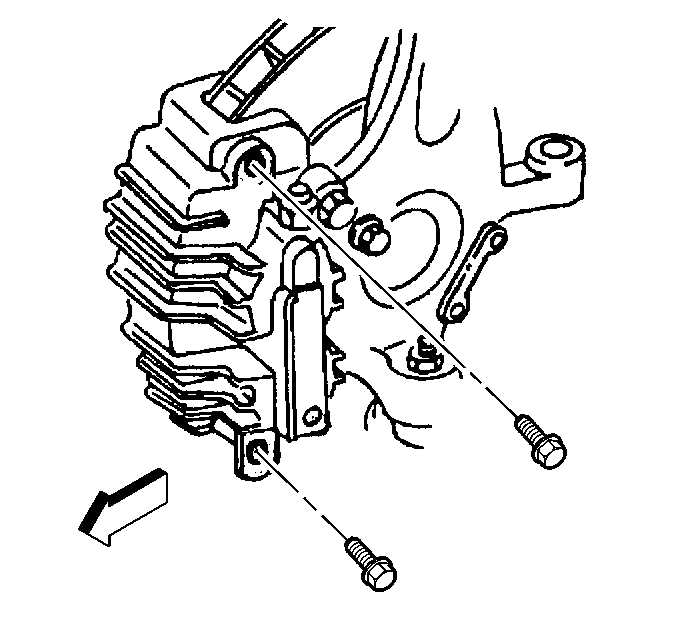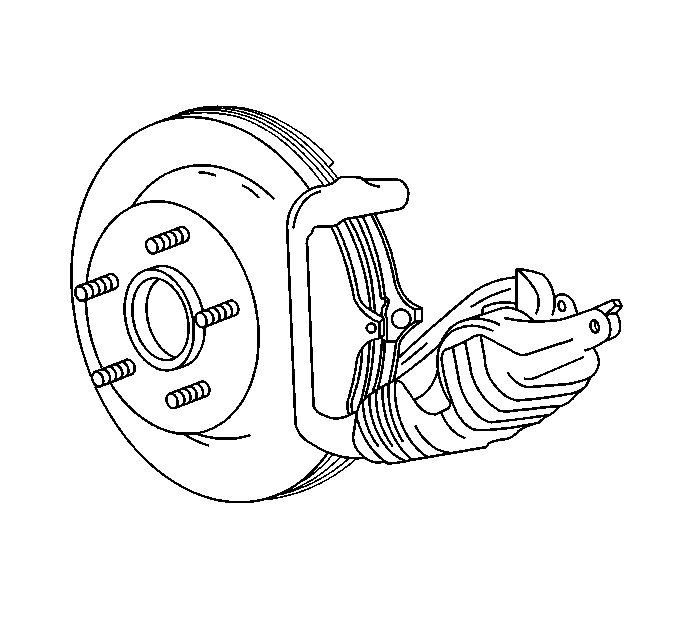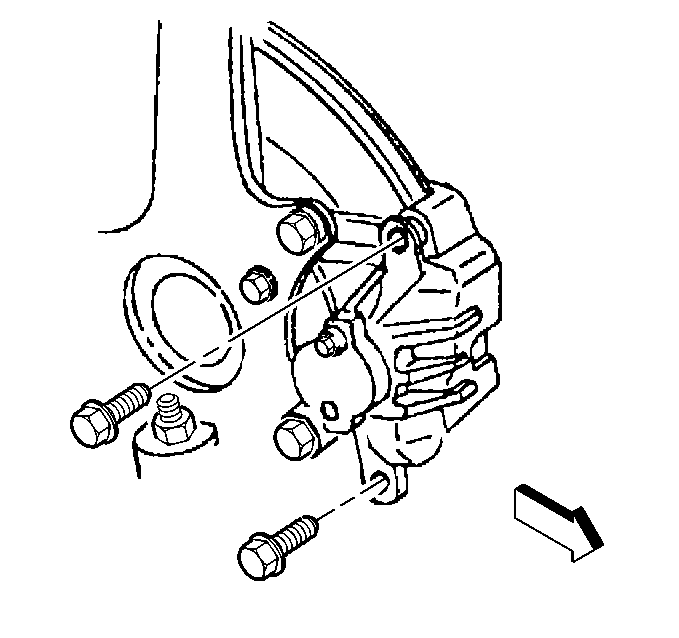Removal Procedure
- Remove two-thirds of the brake fluid from the master cylinder reservoirs.
- Discard in an approved container.
- Raise the vehicle and support. Refer to Lifting and Jacking the Vehicle in General Information.
- Remove the tire and wheel assembly. Refer to Tire and Wheel Removal and Installation in Tires and Wheels.
- Depress the piston into the brake caliper housing bore to provide clearance between the brake pads and the brake rotor.
- Make sure one end of the C-clamp or equivalent, rests on the inlet fitting bolt and the other end against the outboard brake pad.
- Remove the brake caliper guide pin bolts.
- Remove the brake caliper from the brake caliper mounting bracket and the brake rotor.
- Remove the brake pads.



Support the caliper so that there is no weight on the brake hose.
Installation Procedure
- Apply a thin coat of silicone grease (GM P/N 18010909 or equivalent) to the brake pad retainers/brake caliper bracket where the brake pads come in contact with the brake pad retainers/brake caliper bracket.
- Install new brake pads onto the brake caliper.
- Install the brake caliper to the brake caliper mounting bracket and the brake rotor.
- Install the brake caliper guide pin bolts.
- Install the tire and wheel assembly. Refer to Tire and Wheel Removal and Installation in Tires and Wheels.
- Lower the vehicle.
- Refill the master cylinder to the proper level with clean, fresh brake fluid.
- With the engine running, pump the brake pedal slowly and firmly to seat the brake pads.
- Inspect the hydraulic brake system for brake fluid leaks.
- Burnish brakes as necessary. Refer to Brake Pad and Rotor Burnishing .

| 2.1. | The outboard brake pad with insulator installed toward the brake caliper housing. |
| 2.2. | The inboard brake pad with the wear sensor installed nearest the brake caliper piston. |
| 2.3. | The wear sensor must be in the trailing position during forward wheel rotation. |
| 2.4. | Replace brake pads in axle sets only. |


Caution: These fasteners MUST be replaced with new fasteners anytime they become loose or are removed. Failure to replace these fasteners after they become loose or are removed may cause loss of vehicle control and personal injury.
Notice: Use the correct fastener in the correct location. Replacement fasteners must be the correct part number for that application. Fasteners requiring replacement or fasteners requiring the use of thread locking compound or sealant are identified in the service procedure. Do not use paints, lubricants, or corrosion inhibitors on fasteners or fastener joint surfaces unless specified. These coatings affect fastener torque and joint clamping force and may damage the fastener. Use the correct tightening sequence and specifications when installing fasteners in order to avoid damage to parts and systems.
Tighten
Tighten the brake caliper guide pin bolts to 31 N·m (23 lb ft).
Tighten
Tighten the wheel nuts in sequence to 140 N·m (100 lb ft).
Notice: When filling the master cylinder, use only Delco Supreme 11, GM P/N 12377967 (Canadian P/N 992667), or equivalent DOT 3 brake fluid. Do not use a container which has been used for petroleum based fluids, or a container which is wet with water. Petroleum based fluids will cause swelling and distortion of rubber parts in the hydraulic brake system, and water will mix with brake fluid, lowering the boiling point. Keep all fluid containers capped to prevent contamination.
Caution: Do not move the vehicle until a firm brake pedal is obtained. Failure to obtain a firm pedal before moving vehicle may result in personal injury.
